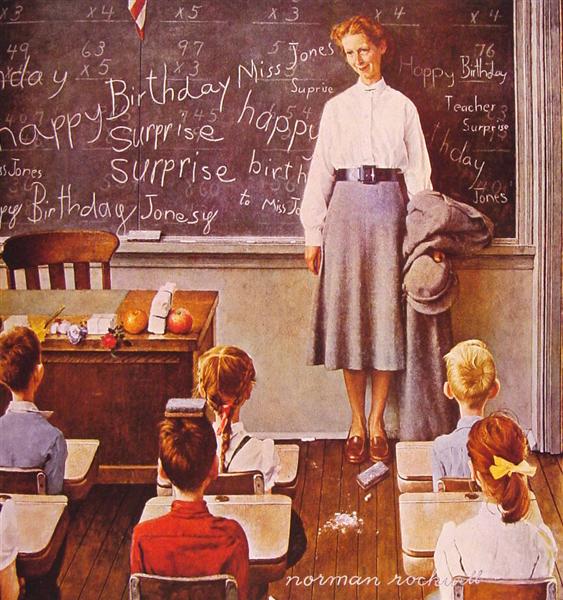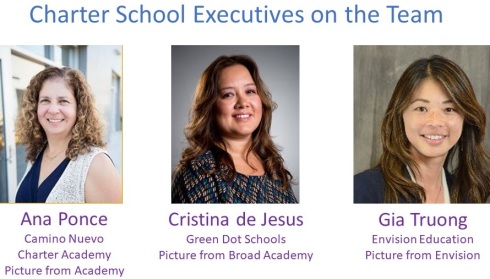SBE’s charters report mixed performance results
(Calif.) Among the sprawling network of 27 charter schools overseen by the California State Board of Education, 20 were found to be in good financial health during the 2017-18 fiscal year.
But just nine in the group were found to have either met the state standards for academic progress or exceeded it.
Six schools were found to have met some student performance marks but not others, and two charters were found to be failing.
State law gives the SBE authority to approve a charter application under several conditions, the most common being denial at the local level. Since the early 1990s, the board has considered scores of applications, but only approved a handful prior to the election of former Gov. Arnold Schwarzenegger.
Gov. Jerry Brown, also a strong charter advocate, has also actively endorsed new charter school adoptions by his appointees to the SBE.
To gauge fiscal status, the California Department of Education considers a variety of factors, including the adequacy of cash management, debt levels, trends in enrollment and attendance, revenue and expenditure projections, and assessing the multi-year projected financial position of the charter school.
Additionally, charter schools are required to maintain a cash reserve based on schools of similar size.
Five of the SBE’s sponsored schools were found to be in poor financial shape:
- Academia Avance Charter, Los Angeles;
- Celerity Rolas Charter School, Los Angeles;
- Paramount Collegiate Academy, Sacramento (voluntary closed in February 2018);
- Prepa Tec Los Angeles High, Los Angeles; and
- Rocketship Futuro Academy, Concord.
So far, the CDE has issued letters of concern to each of the charter boards and requested that corrective action be taken. If the charter leadership doesn’t take the requested action or doesn’t Continue reading: SBE’s charters report mixed performance results :: K-12 Daily :: The Essential Resource for Superintendents and the Cabinet
- Financial Condition of State Board of Education-Authorized Charter Schools–Fiscal Year 2017–18(DOCX; Posted 13-Aug-2018)
- Financial Condition of State Board of Education–Authorized Districtwide Charters–2017–18 Second Interim(DOCX; Posted 13-Aug-2018)
- Academic Progress of State Board of Education-Authorized Charter Schools(DOCX; Posted 13-Aug-2018)
- Academia Avance Charter(DOCX; Posted 13-Aug-2018)
- Response from Academia Avance Charter(PDF; Posted 13-Aug-2018)
- Anahuacalmecac International University Preparatory of North America(DOCX; Posted 13-Aug-2018)
- Response from Anahuacalmecac International University Preparatory of North America(PDF; Posted 13-Aug-2018)
- Audeo Charter ll(DOCX; Posted 13-Aug-2018)
- Response from Audeo Charter II(PDF; Posted 13-Aug-2018)
- Barack Obama Charter(DOCX; Posted 13-Aug-2018)
- Response from Barack Obama Charter(PDF; Posted 13-Aug-2018)
- Baypoint Preparatory Academy(DOCX; Posted 13-Aug-2018)
- Response from Baypoint Preparatory Academy(PDF; Posted 13-Aug-2018)
- Celerity Himalia Charter(DOCX; Posted 13-Aug-2018)
- Response from Celerity Himalia Charter(PDF; Posted 13-Aug-2018)
- Celerity Rolas Charter(DOCX; Posted 13-Aug-2018)
- Response from Celerity Rolas Charter(PDF; Posted 13-Aug-2018)
- Grossmont Secondary(DOCX; Posted 13-Aug-2018)
- Response from Grossmont Secondary(PDF; Posted 13-Aug-2018)
- High Tech Elementary Chula Vista(DOCX; Posted 13-Aug-2018)
- Response from High Tech Elementary Chula Vista(PDF; Posted 13-Aug-2018)
- High Tech Middle Chula Vista(DOCX; Posted 13-Aug-2018)
- Response from High Tech Middle Chula Vista(PDF; Posted 13-Aug-2018)
- High Tech High Chula Vista(DOCX; Posted 13-Aug-2018)
- Response from High Tech High Chula Vista(PDF; Posted 13-Aug-2018)
- High Tech Elementary North County(DOCX; Posted 13-Aug-2018)
- Response from High Tech Elementary North County(PDF; Posted 13-Aug-2018)
- High Tech Middle North County(DOCX; Posted 13-Aug-2018)
- Response from High Tech Middle North County(PDF; Posted 13-Aug-2018)
- High Tech High North County(DOCX; Posted 13-Aug-2018)
- Response from High Tech High North County(PDF; Posted 13-Aug-2018)
- Magnolia Science Academy Santa Ana(DOCX; Posted 13-Aug-2018)
- Response from Magnolia Science Academy Santa Ana(PDF; Posted 13-Aug-2018)
- The New School of San Francisco(DOCX; Posted 13-Aug-2018)
- New West Charter(DOCX; Posted 13-Aug-2018)
- Response from New West Charter(PDF; Posted 13-Aug-2018)
- Olive Grove Charter(DOCX; Posted 13-Aug-2018)
- Response from Olive Grove Charter(PDF; Posted 13-Aug-2018)
- OnePurpose(DOCX; Posted 13-Aug-2018)
- Prepa Tec Los Angeles High(DOCX; Posted 13-Aug-2018)
- Response from Prepa Tec Los Angeles High(PDF; Posted 13-Aug-2018)
- Ridgecrest Charter(DOCX; Posted 13-Aug-2018)
- Response from Ridgecrest Charter(PDF; Posted 13-Aug-2018)
- Rocketship Futuro Academy(DOCX; Posted 13-Aug-2018)
- Response from Rocketship Futuro Academy(PDF; Posted 13-Aug-2018)
- Ross Valley Charter(DOCX; Posted 13-Aug-2018)
- Response from Ross Valley Charter(PDF; Posted 13-Aug-2018)
- School of Arts and Enterprise(DOCX; Posted 13-Aug-2018)
- Response from School of Arts and Enterprise(PDF; Posted 13-Aug-2018)
- Sweetwater Secondary(DOCX; Posted 13-Aug-2018)
- Response from Sweetwater Secondary(PDF; Posted 13-Aug-2018)
- Thrive Public(DOCX; Posted 13-Aug-2018)
- Response from Thrive Public(PDF; Posted 13-Aug-2018)
- State Board of Education-Authorized Districtwide Charters: Annual Academic Report(DOCX; Posted 13-Aug-2018)
- Ackerman Charter(PDF; Posted 13-Aug-2018)
- Alvina Elementary(PDF; Posted 13-Aug-2018)
- Hickman Community Charter(PDF; Posted 13-Aug-2018)
- Island Union Elementary(PDF; Posted 13-Aug-2018)
- Kingsburg Elementary Charter(PDF; Posted 13-Aug-2018)
- Kings River-Hardwick Union Elementary(PDF; Posted 13-Aug-2018)
- Pioneer Union Elementary(PDF; Posted 13-Aug-2018)










